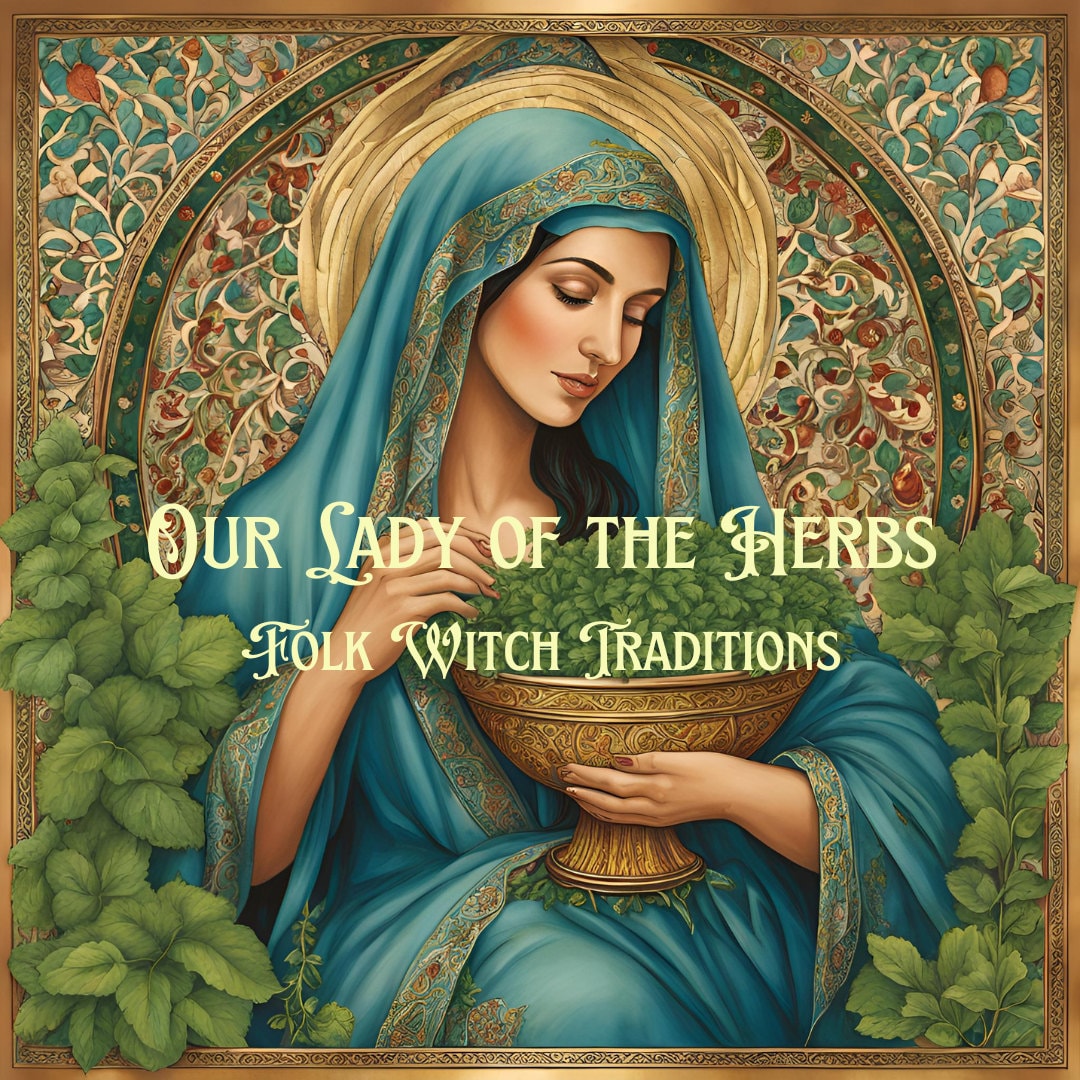Origins and Background
The tradition of associating the Virgin Mary with herbs and healing dates back to early Christian practices, where Mary was often invoked in times of need, including for physical and spiritual healing. Many cultures have blended their pre-Christian herbal traditions with Christian beliefs, seeing Mary as a nurturing figure who can guide the use of natural and magical remedies.
Connection to Nature: Mary is often depicted as being close to nature, with titles like "Our Lady of the Fields" or "Our Lady of the Garden." In the "Our Lady of the Herbs" tradition, she is viewed as the spiritual guardian of all plants, especially those with healing properties.
European Folk Practices: In various European cultures, particularly in countries with strong Catholic traditions like Italy, Poland, and parts of Germany, Mary is honored through the use of herbs in folk healing practices. This tradition was carried over to the Americas by immigrants and continues to influence folk magic practices today.
Key Elements of the Tradition
Herbal Devotionals: Folk magic practitioners may create altars dedicated to the Virgin Mary, often incorporating herbs, flowers, and plants that are associated with healing. These herbs may be grown in a special garden, harvested with prayers, or arranged in offerings to Mary.
Marigold (Mary's Gold): Traditionally associated with the Virgin Mary, marigolds are used in offerings and healing rituals.
Rosemary: Considered sacred to Mary, rosemary is used for protection, purification, and healing.
Lavender: Often included in rituals for peace and spiritual cleansing.
Roses: Associated with Mary's purity and love, roses are often used in prayers and rituals for emotional healing.
The tradition emphasizes prayer and direct communication with Mary, asking for her intercession in healing and protection. This may involve reciting the Rosary, Hail Marys, or specific prayers invoking Mary’s aid in herbal remedies.
"Our Lady of the Herbs, blessed mother and healer,
Guide my hands as I work with these sacred plants.
Grant your blessing upon this remedy,
That it may bring healing, peace, and comfort,
In your holy name, Amen."
Practitioners use herbs in various ways, including creating teas, tinctures, poultices, and incenses. These remedies are often prepared with specific prayers or rituals dedicated to Mary.
- Sacred baths using herbs like rosemary, lavender, and marigold can be blessed in Mary's name and used for purification or healing.
- Herbal oils infused with plants like olive, rosemary, or rose can be consecrated to Mary and used for anointing and healing.
- The tradition places a strong emphasis on using herbs for both physical healing and spiritual protection. Mary is seen as a protector who shields individuals from harm, curses, or evil influences, often through the use of blessed herbs.
Certain times of the year, especially feast days dedicated to the Virgin Mary, are considered particularly powerful for working with herbs. For example, the Feast of the Assumption (August 15th) is often associated with the blessing of herbs in folk Catholic traditions.
On this day, practitioners may gather herbs and place them on their Marian altars or bring them to church for blessing or create special offerings, asking for Mary’s protection and healing throughout the year.
Creating a Healing Talisman
Here is a simple ritual to create a healing talisman in the "Our Lady of the Herbs" tradition.
Materials:
- A small cloth bag (white or blue, symbolic of Mary)
- Herbs associated with healing (e.g., rosemary, lavender, marigold, and rose petals)
- A small medal or image of the Virgin Mary
- A white or blue candle
- Holy water or blessed oil
Prepare the Space: Light the candle and create a small altar or space dedicated to Mary. Place her image or statue in a central spot.
Consecrate the Herbs: Place the herbs in front of the altar. Say a prayer to Mary, asking her to bless and consecrate these herbs for healing.
Create the Talisman: Place the herbs and the medal or image of Mary into the cloth bag. As you do this, focus on your intention for healing, protection, or comfort.
Bless the Talisman: Sprinkle holy water or anoint the bag with blessed oil.
Say:
"Our Lady of the Herbs, I ask your blessing upon this talisman,
May it bring healing and protection,
In your name and under your loving care."
Seal the Ritual: Close the ritual with a prayer of gratitude and extinguish the candle. Keep the talisman close or give it to someone in need of healing.
Our Lady of the Herbs tradition is a beautiful blend of Christian devotion and folk magic, where the Virgin Mary serves as a bridge between the divine and the natural world. Through the careful use of herbs, prayers, and rituals, practitioners seek healing, protection, and spiritual connection, all under the guidance of Mary. This tradition is a reminder of the sacredness of nature and the powerful intercession of the divine feminine in daily life.

